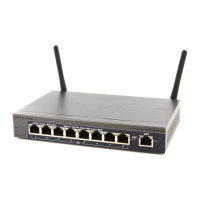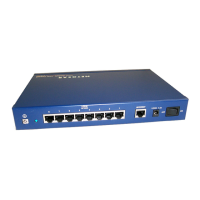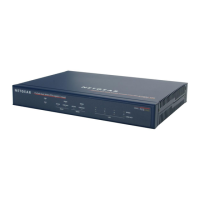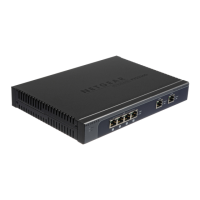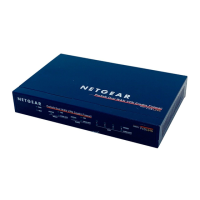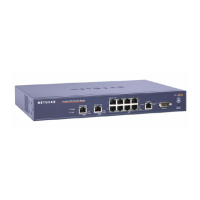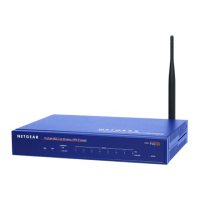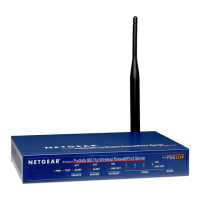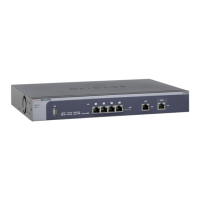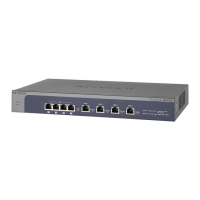Virtual Private Networking Using IPSec and L2TP Connections
249
NETGEAR ProSAFE VPN Firewall FVS318G v2
Each policy contains the data that are described in the following table. These fields are
described in more detail in Table 53 on page 25
2.
To delete one or more VPN polices:
1. Log in to the unit:
a. In the address field of any of the qualified web browsers, enter
https://192.168.1.1.
The NETGEAR Configuration Manager Login screen d
isplays.
b. In the Username
field, enter admin and in the Password / Passcode field, enter
password.
Use lowercase letters. If you changed the password, enter your personalized
password. Leave the domain as it is (geardomain).
c. Click
the Logi
n button.
The Router Status screen displays. After five minutes of inactivity
, which is the default
login time-out, you are automatically logged out.
2. Select V
P
N > IPSec VPN > VPN Policies.
The VPN Policies screen displays.
3. Select the check box to the left of each policy that you want to
delete or click the Select All
table button to select all VPN policies.
4. Click the Del
ete table button.
Table 52. VPN Policies screen information for IPv4 and IPv6
Item Description
! (Status) Indicates whether the policy is e
nabled (green circle) or disabled (gray circle). To
enable or disable a policy, select the check box to the left of the circle, and click the
Enable or Disable table button, as appropriate.
Name The name that identifies the VPN policy. When you use the VPN Wizard to create a
VPN policy, the name of the VPN policy (and of the automatically created
accompanying IKE policy) is the connection name.
Type Auto or Manual as described previously (Auto is used during VPN Wizard
configuration).
Local IP address (either a single address, range of address, or subnet address) on your
LAN. Traffic must be from (or to) these addresses to be covered by this policy. (The
subnet address is supplied as the default IP address when you are using the VPN
Wizard.)
Remote IP address or address range of the remote network. Traffic must be to (or from) these
addresses to be covered by this policy. (The VPN Wizard default requires the remote
LAN IP address and subnet mask.)
Auth The authentication algorithm that is used for the VPN tunnel. This setting must match
the setting on the remote endpoint.
Encr The encryption algorithm that is used for the VPN tunnel. This setting must match the
setting on the remote endpoint.
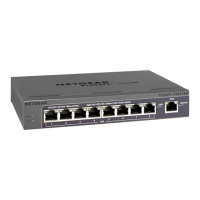
